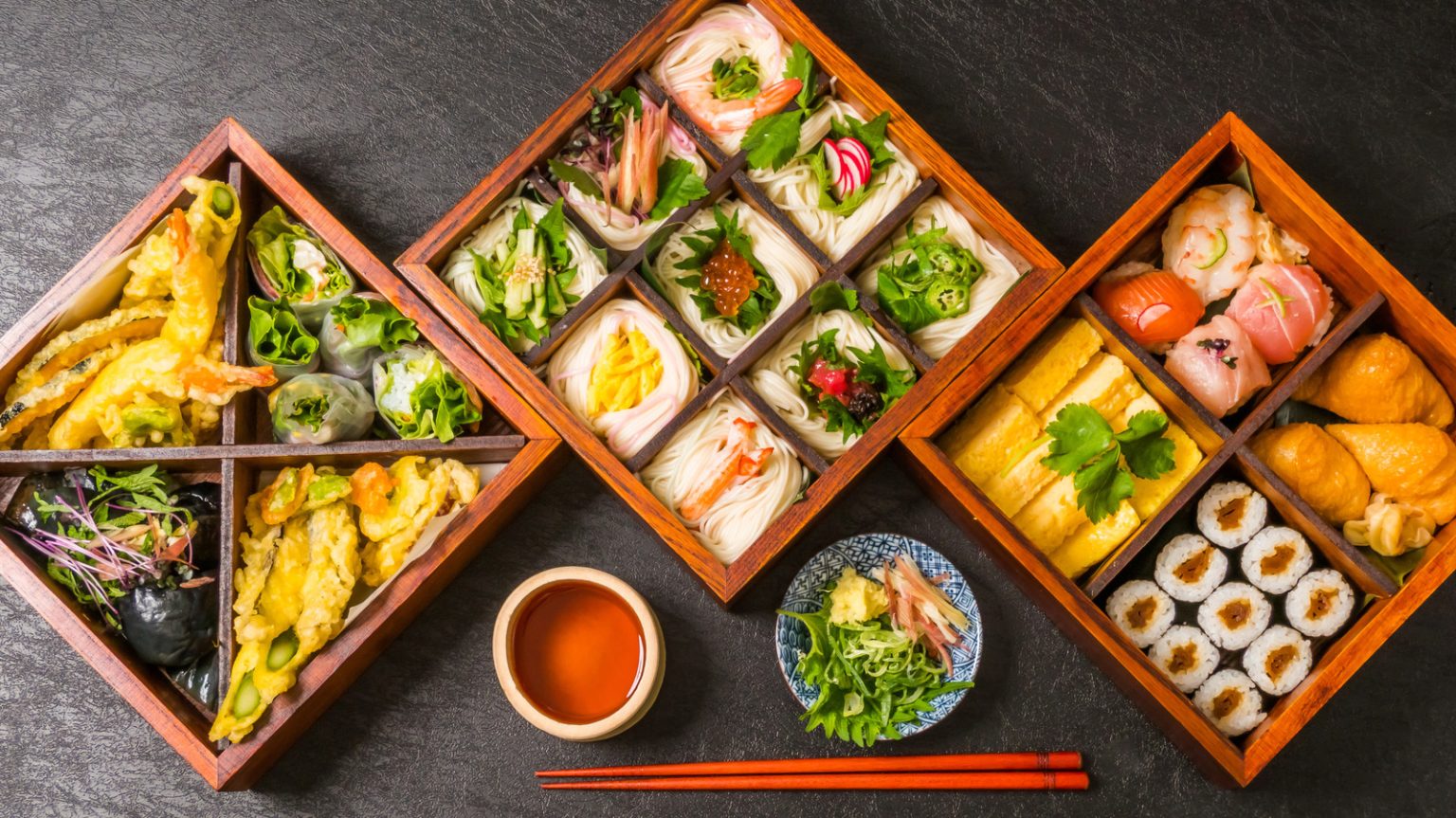Japan is a land of vibrant culture, ancient traditions, and exquisite cuisine. From the bustling streets of Tokyo to the serene countryside, every corner of this captivating country offers a unique culinary experience. Japanese cuisine is celebrated for its freshness, delicate flavors, and attention to detail. In this blog post, we will take you on a mouthwatering journey through Japan, exploring seven must-try local dishes that will tantalize your taste buds and leave you craving for more.
1. Sushi

No journey through Japanese cuisine is complete without indulging in the world-famous sushi. Made with vinegared rice, fresh seafood, and a variety of other ingredients, sushi is an art form in itself. Whether you opt for traditional nigiri sushi or try the more adventurous rolls like maki and temaki, each bite will transport you to gastronomic bliss. Don’t miss the opportunity to savor the melt-in-your-mouth texture of fatty tuna, delicate slices of salmon, and the subtle flavors of sea urchin.
Sushi is not just a meal; it is a cultural experience that showcases the mastery of Japanese culinary craftsmanship. From the precise selection of ingredients to the meticulous preparation and presentation, each piece of sushi is a testament to the dedication and skill of the sushi chef.
2. Ramen

Warm, comforting, and bursting with flavor, ramen has captured the hearts (and stomachs) of people around the world. Originating from China, this noodle soup dish has evolved into a beloved Japanese staple. With its rich, savory broth, perfectly cooked noodles, and a variety of toppings such as tender chashu pork, marinated eggs, and crispy seaweed, each bowl of ramen is a symphony of tastes and textures. From the creamy tonkotsu ramen to the tangy miso ramen, there is a flavor profile to suit every palate.
The heart of a bowl of ramen lies in its broth. There are various types of ramen broth, each with its distinct flavor profile. One of the most popular styles is tonkotsu ramen, which features a rich, creamy broth made from boiling pork bones for hours until they release their collagen, resulting in a thick and flavorful soup. The tonkotsu broth is often accompanied by tender slices of chashu pork, marinated soft-boiled eggs, bamboo shoots, and scallions.
3. Tempura

Crispy, golden-brown, and unbelievably light, tempura is a classic Japanese dish that showcases the art of deep-frying. With a delicate batter that encases fresh seafood, vegetables, and even seasonal delicacies like shrimp and lotus root, tempura is a feast for both the eyes and the taste buds. Dip each morsel into a light soy-based dipping sauce and savor the perfect balance between the crispy exterior and the succulent interior.
Tempura was introduced to Japan by Portuguese missionaries in the 16th century, and it has since evolved into a beloved culinary tradition. The dish consists of various ingredients, such as shrimp, fish, squid, mushrooms, eggplant, sweet potatoes, and even delicate cherry blossoms, coated in a light batter and then deep-fried to perfection.
4. Okonomiyaki

Hailing from the streets of Osaka, okonomiyaki is often referred to as a Japanese pancake or savory cabbage pancake. This delightful creation combines a batter of flour, shredded cabbage, eggs, and a medley of ingredients like pork, shrimp, or even cheese. The result is a savory, crispy-on-the-outside, soft-on-the-inside treat. Topped with a generous drizzle of tangy okonomiyaki sauce, creamy mayonnaise, and sprinkles of bonito flakes, each mouthful is a burst of umami flavors.
At its core, okonomiyaki consists of a batter made from flour, grated yam, eggs, and dashi (a type of fish stock), which is mixed together to form a thick and creamy base. The batter serves as a canvas for an assortment of ingredients that are added according to personal preference.
5. Yakitori

For all the meat lovers out there, yakitori is an absolute must-try. These skewered grilled chicken skewers are a popular street food in Japan, often enjoyed alongside a glass of cold beer or sake. From tender chicken thighs to succulent chicken wings, each skewer is marinated in a flavorful sauce, grilled to perfection, and served with a sprinkle of salt or a squeeze of fresh lemon. The smoky aroma and the juicy bites make yakitori a true delight for meat enthusiasts.
Yakitori literally translates to “grilled bird,” but it has evolved to encompass a wide variety of skewered ingredients beyond just chicken. While chicken remains the most popular choice, yakitori can also feature other meats like pork, beef, or seafood, as well as an assortment of vegetables.
6. Takoyaki

Originating from Osaka, takoyaki is a popular snack that has gained popularity throughout Japan. These bite-sized, ball-shaped treats are made from a batter filled with diced octopus, green onions, and tempura scraps. Cooked in special takoyaki pans, the batter is transformed into golden spheres with a crispy exterior and a soft, gooey center. Topped with a sweet and savory sauce, mayonnaise, and a sprinkling of dried bonito flakes, takoyaki offers a delightful explosion of flavors in every bite.
Takoyaki is made from a batter that consists of flour, eggs, dashi (a type of fish stock), and water. The batter is poured into specially designed takoyaki pans, which are round and shallow, with several half-spherical molds. In the center of each mold, a piece of tender octopus, known as tako in Japanese, is placed. The batter and octopus are then cooked together, creating a unique and delicious combination.
7. Matcha

To conclude our culinary journey, we must not forget the traditional Japanese tea ceremony and the enchanting world of matcha. Matcha, a finely ground powder made from specially grown and processed green tea leaves, is a key component of Japanese culture. It is not only used in tea ceremonies but also finds its way into various desserts, including matcha-flavored ice cream, cakes, and traditional wagashi sweets. The vibrant green color and the distinctive bitter-sweet flavor of matcha are truly captivating and provide a perfect ending to any Japanese culinary adventure.
Matcha is made from shade-grown tea leaves known as tencha. The tea bushes are covered for several weeks before harvesting to enhance the production of chlorophyll and amino acids, resulting in a rich and vibrant green color. After harvesting, the leaves are steamed, dried, and carefully ground into a fine powder using traditional stone mills.
Conclusion
Japan’s culinary landscape is as diverse and intriguing as the country itself. With its emphasis on quality ingredients, meticulous preparation, and attention to detail, Japanese cuisine has captured the hearts of food enthusiasts worldwide. From the artistry of sushi to the soul-soothing warmth of ramen, each dish offers a unique sensory experience. So, the next time you find yourself in Japan or stumble upon a Japanese restaurant in your hometown, be sure to seek out these seven local dishes. Prepare yourself for a taste adventure that will leave you forever enchanted by the flavors of Japan. Itadakimasu!



